opening hours
Monday closed
Tuesday to Sunday 11 am – 7 pm
Tuesday 24 December 11 am > 4 pm
Monday 25 December closed
Tuesday 31 December 11 am > 4 pm
Wednesday 1 January 11 am > 7 pm
Monday 6 January 11 am > 8 pm
- full price € 15 at the box office - € 14 online
- reduced price € 12 at the box office - € 11 online
for young people aged between 18 and 25 (not yet turned 25); for groups of 15 people or more; La Galleria Nazionale, Museo Ebraico di Roma ticket holders; upon presentation of ID card or badge: Accademia Costume & Moda, Accademia Fotografica, Biblioteche di Roma, Centro Sperimentale di Cinematografia, Enel (for badge holder and accompanying person), FAI – Fondo Ambiente Italiano, Feltrinelli, Gruppo FS, IN/ARCH – Istituto Nazionale di Architettura, Sapienza Università di Roma, LAZIOcrea, Palazzo delle Esposizioni, Amici di Palazzo Strozzi, Accademia Nazionale di Santa Cecilia, Scuola Internazionale di Comics, Teatro Olimpico, Teatro dell’Opera di Roma, Teatro di Roma, Università degli Studi di Roma Tor Vergata, Youthcard; upon presenting at the ticket office a Frecciarossa or a Frecciargento ticket to Rome purchased between 27 November 2024 and 20 April 2025
- open € 18
valid for one year from the date of purchase
- free
minors under 18 years of age; disabled people requiring companion; EU Disability Card holders and accompanying person; MiC employees; myMAXXI cardholders; registered journalists with a valid ID card; European Union tour guides and tour guides, licensed (ref. Circular n.20/2016 DG-Museums); 1 teacher for every 10 students; AMACI members; CIMAM – International Committee for Museums and Collections of Modern Art members; ICOM members; journalists (who can prove their business activity); European Union students and university researchers in art history and architecture, public fine arts academies (AFAM registered) students and Temple University Rome Campus students from Tuesday to Friday (excluding holidays); IED – Istituto Europeo di Design professors, NABA – Nuova Accademia di Belle Arti professors, RUFA – Rome University of Fine Arts professors; upon presentation of ID card or badge: Collezione Peggy Guggenheim a Venezia, Castello di Rivoli Museo d’Arte Contemporanea, Sotheby’s Preferred, MEP – Maison Européenne de la Photographie; on your birthday presenting an identity document
Collection
MAXXI’s Collection of Art and Architecture represents the founding element of the museum and defines its identity. Since October 2015, it has been on display with different arrangements of works.





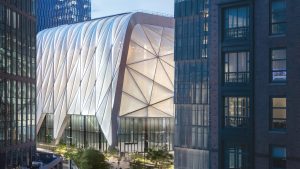
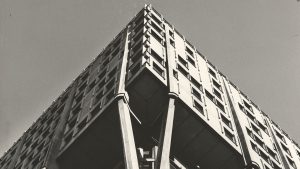

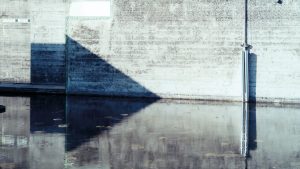

















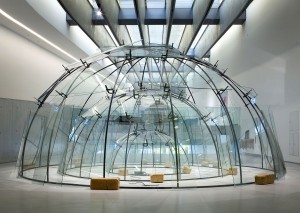
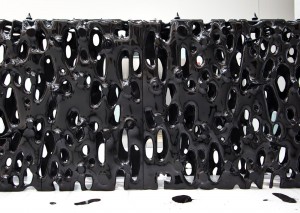
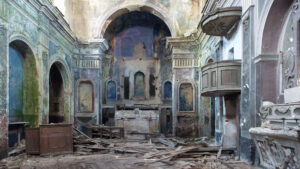

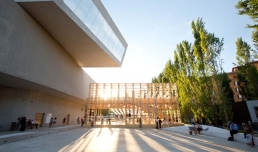
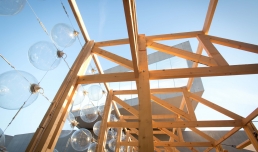
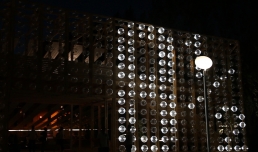
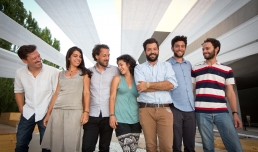
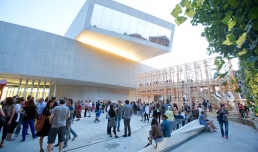
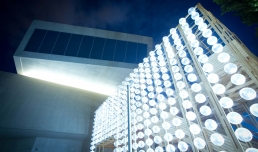






Corner D and Spazio YAP
YAP MAXXI is the programme that promotes and supports young architecture, organized by MAXXI in collaboration with MoMA/MoMA PS1 of New York, Constructo in Santiago, Chile, Istanbul Modern (Turkey) and for the first time MMCA National Museum of Modern and Contemporary Art of Seoul (Korea).
Every year an young architecture studio presents an installation hosting summer events and offering the public of the museum an area for relaxation.
An international jury has chosen, from a shortlist of five finalists, the winning project for YAP MAXXI 2014, the fourth edition of the competition: the installation 8½ by the Rome-based studio orizzontale: a wall eight and a half metres high, a portable theatre, a machine for inhabiting the public space that will accompany visitors from June and throughout the summer period.
The exhibition features the models of the other four short-listed projects from the Italian edition. It also presents the entire YAP – Young Architects Program 2014 through images of the winning and short-listed projects from MoMA/MoMA PS1, MMCA and Costructo accompanied by statements from the respective organizers and curators, offering visitors the possibility to compare the different approaches to the theme from the four corners of the globe.
8½ – THE WINNER
8½ is a portable theatre, a machine for inhabiting the public space, by the Rome-based studio orizzontale.
It is a reflection on landscape that transforms public space from a backdrop to private encounters and individual moments to a setting for public events and collective representations.
The installation is composed of two complementary elements: a crossable wooden wall eight and a half metres high , that represents a “threshold” reorganizing the museum’s open space. The wall is completely covered on one side with plastic spheres deriving from the recycling of organic beer containers. In addition the stage platform and the covered arena present seating and water features.
The arena is both a theatre, a place destined for public events and performances, and a piazza, an architectural device for the everyday use of public space.
While designed specifically for Piazza Alighiero Boetti, it has been designed to be able to be easily dismantled and transported and adaptable to new sites with flexibility and intelligence.
orizzontale (Jacopo Ammendola, Giuseppe Grant, Juan Lopez Cano – Cardeña, Margherita Manfra, Nasrin Mohiti Asli, Roberto Pantaleoni, Stefano Ragazzo) is a collective of architects who conduct operational research into the process of reactivating urban waste. Starting with the interception of sites, ideas and materials expelled by the city’s productive cycle, orizzontale activates collaborative processes through temporary interventions and minimal self-built architecture, during which the material and immaterial residues mutually restore meaning to one another.
THE FINALIST
PKMN architectures & CICLOSTILE architettura | Picnictopia
B22 | BE YA!
INOUTarchitettura | Aladino
Matilde Cassani | Good News